Hospital Medicine has been a growing career choice among combined internal medicine and pediatrics (med-peds) physicians with an increasing number of resident graduates entering the field in recent years. Physicians within this specialty make valuable contributions to hospital medicine through leadership, education, and advocacy involvement. Med-peds hospitalists also contribute by creating an adaptable workforce as well as one that can provide perspective to assist in specialized areas including the transition of adolescents and young adults with chronic illness. Despite the attributes of this population within the hospitalist community, current challenges threaten its ongoing growth and the careers of established leaders in the field.
A growing and beneficial resource
Over the last several years, hospital medicine has been among the top fields that med-peds residents consider, attracting as many as 26.4% of graduates.1 Nationally, it’s estimated there are 350 to 400 med-peds hospitalists, making up approximately 10% of the pediatric hospital medicine (PHM) workforce.1,2 In a recent survey, 80% of med-peds-trained hospitalists responded that they continue to use their training to care for both adult and pediatric populations.3
Med-peds hospitalists bring a breadth of knowledge and experience as well as adaptability to the institutions they serve. This was evident during the COVID-19 pandemic when patient surges and staffing shortages created significant needs. Many institutions redeployed med-peds hospitalists to adult wards to handle the patient volume when pediatric inpatient volumes decreased. Many med-peds hospitalists also assisted pediatricians who were faced with the care of adults. The Pediatric Overflow Planning Contingency Response Network (POPCoRN) was one of the largest demonstrations of this resourcefulness, created by med-peds clinicians. This network grew rapidly during the early months of the pandemic and created tools to aid pediatric practitioners and other redeployed physicians. It also empowered junior physicians and trainees to engage in the creation of agile educational and operational systems in addition to advancing health equity during a time of crisis.4
With the surges in pediatric respiratory viruses in late 2022, med-peds hospitalists continued to demonstrate adaptability, with many providing extra coverage to overflowing pediatric inpatient units. This population of clinicians and leaders helped innovate within pediatric hospital systems with unique staffing models and operational learning from the surge experience of the COVID-19 pandemic.
Caring for patients with chronic diseases of childhood onset has also been a focus and strength of many med-peds hospitalists. Many of these patients are living longer into adulthood, and many internal medicine providers have limited experience in caring for them. Med-peds providers have played a strong role in caring for this population and providing expertise in transitions of care. Many institutions have developed med-peds consult services that assist with the care of young adults and ensure they are receiving the best, evidence-based care possible.5
Changes and threats to growth
The med-peds hospitalist workforce is a valuable resource, but recent changes in hospital medicine have the potential to negatively impact the growth and potential longevity of the field.
The largest change has been the introduction of subspecialty certification in PHM by the American Board of Pediatrics. This certification, which was approved in 2016, requires physicians to complete a fellowship in PHM to be eligible to take the board subspecialty exam. While a practice pathway for physicians who completed residency before 2019 is available for a limited time, it requires specific criteria to be met, limiting the number of those who may qualify. While recognition of PHM as a subspecialty has numerous potential benefits to advance the field, there are significant unintended consequences of the current certification process affecting those looking to become, and those already practicing as, med-peds hospitalists.6
These changes have had a significant impact on trainees and their career aspirations. While more than 97% of med-peds residents previously considered a career in hospital medicine during their residency, that number has decreased by more than 90% with the recent changes to the PHM board certification process.7
Key factors dissuading residents from pursuing PHM fellowship include forfeited earnings during the fellowship, and student-loan and family obligations. The vast majority of residents also feel that residency training has adequately prepared them to practice both adult and pediatric inpatient medicine.8 Even for those who remain interested, there are significant concerns that the current number of fellowship spots is insufficient to accommodate these trainees as there are approximately 104 positions available to graduates of pediatric and med-peds programs nationally. Additionally, few programs can provide training that will allow graduates to maintain their adult medicine skills; approximately 30% of programs currently can accommodate adult clinical opportunities.9
Faculty who have been practicing as med-peds hospitalists for years are also facing potential threats from these recent changes. Due to strict criteria that must be met to become board-certified via the practice pathway, many established practitioners and leaders in the field are encountering challenges in the certification process. This includes leaders in medical education who cannot meet the minimum clinical hours to become board-eligible due to administrative commitments. These strict criteria have also negatively impacted those resourceful physicians who were redeployed to have more clinical adult time to meet the needs of their institutions thereby reducing their clinical pediatric time. These changes are potential barriers to career options, as more hospitals are limiting their hiring to those who are board-eligible or board-certified.
Additional threats to the field include the ongoing lack of parity that exists between the fields of adult and pediatric hospital medicine. With pediatric hospital medicine providing less compensation, most med-peds hospitalists already take a pay cut by caring for children instead of exclusively for adults. Now, the PHM fellowship requirement adds additional years of reduced compensation that further magnifies these financial discrepancies.
Future concerns
One additional worry is how the impact of these changes will spread beyond the individuals in the field of med-peds hospital medicine to the systems in which we work and care for patients.
Trainees’ decreased interest in hospital medicine and limited opportunities will reduce the number of physicians in the pipeline needed to care for children and adults with complex conditions of childhood when admitted to the hospital.10 This could result in decreased quality of care that this vulnerable population receives, as prior studies have shown that 40% of internists do not feel comfortable caring for these patients.11
The reduction in this adaptable workforce could also have negative implications for the agility of many hospitals to respond to crises. As noted above, the flexibility of med-peds hospitalists during these times is a resource that has helped direct expertise where needed and promote institutional resilience.12 This would add to the stress that some systems may already be experiencing with the decrease in pediatric providers who are entering careers in PHM.
Hope for the future
As med-peds hospitalists and trainees continue to navigate this evolving field, it will be important for this group to advocate and have representation within the organizations that have been driving these changes. Unfortunately, many physicians are involved in various professional societies, resulting in independent work in silos and a lack of awareness of what like-minded colleagues are actively pursuing. Though we are worried about the hurdles described above, we are hopeful that, with continued collaboration and representation, we can overcome obstacles to further develop this powerful team of physicians so they may continue their influential work benefiting patients, institutions, and colleagues.
If you’re a med-peds hospitalist or trainee and want to get more involved, please reach out to any of the authors or the Med-Peds Special Interest Group on the Hospital Medicine Exchange, https://connect.hospitalmedicine.org/home, to be a part of the collaboration and representation and continue to move our field forward.
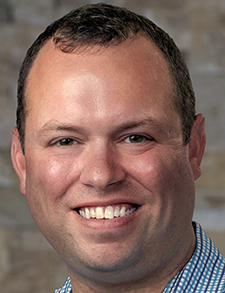
Dr. Fish
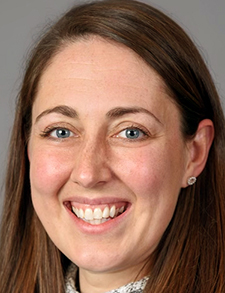
Dr. Peterson
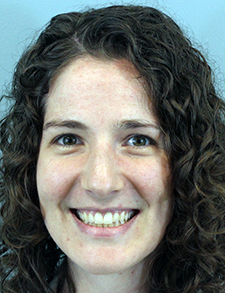
Dr. Matthiesen
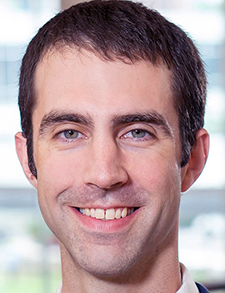
Dr. Hall
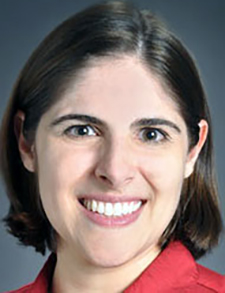
Dr. Stephany
Dr. Fish is a med-peds hospitalist at Baystate Medical Center in Springfield, Mass., where he’s developing a PHM fellowship; he’s also chair of SHM’s Med-Peds SIG. Dr. Peterson is a med-peds hospitalist at Cincinnati Children’s Hospital in Cincinnati. Dr. Matthiesen is a med-peds-trained hospitalist working as a pediatric hospitalist at Massachusetts General Hospital and in clinical development at Vertex in Boston. Dr. Hall is a med-peds hospitalist, associate professor of internal medicine and pediatrics, and assistant dean of curriculum integration at the University of Kentucky College of Medicine in Lexington, Ky. Dr Stephany is director of physician-provider organization support, and clinical academic departments, director of the leadership center for physicians at Children’s Mercy Kansas City, and an associate professor at the University of Kansas School of Medicine and the University of Missouri-Kansas City School of Medicine, Kansas City, Mo.
References
- O’Toole JK, Friedland AR, et al. The practice patterns of recently graduated internal medicine-pediatric hospitalists. Hosp Pediatr. 2015;5(6):309-14.
- Donnelly MJ, et al. The med-peds hospitalist workforce: results from the American Academy of Pediatrics workforce survey. Hosp Pediatr. 2015;5(11):574-9.
- Moza R, Fish D, et al. Workforce characteristics of med-peds hospitalists. Cureus. 2022;14(5):e24799. doi: 10.7759/cureus.24799.
- Beresford L. POPCoRN network mobilizes pediatric capacity during pandemic. The Hospitalist website.. https://www.the-hospitalist.org/hospitalist/article/221557/pediatrics/popcorn-network-mobilizes-pediatric-capacity-during-pandemic. Published April 30, 2020. Accessed December 4, 2023.
- Stehouwer N, Sawaya A, et al. Consultation needs for young adults with intellectual and developmental disabilities admitted to an adult tertiary care hospital: Implications for inpatient practice. J Pediatr Nurs. 2021;60:288-92.
- Mike TB, Afghani B, et al. Unintended consequences of the PHM board certification process. The Hospitalist website. https://www.the-hospitalist.org/hospitalist/article/32814/pediatrics/unintended-consequences-of-the-phm-board-certification-process/. Published August 1, 2022. Accessed December 4, 2023.
- McCarthy JJ, Swartz S, et al. Med-peds residents’ career plans and the impact of pediatric hospital medicine fellowship: A nationwide survey. Hosp Top. 2023;101(4):336-43.
- Donnelly MJ, Thornton SC, et al. Characteristics of the combined internal medicine-pediatrics workforce. Am J Med. 2015;128(12):1374-9.
- Boggs E, Luttrell H, et al. Identifying and supporting the needs of internal medicine and pediatrics residents interested in pediatric hospital medicine fellowship. J Hosp Med. 2021;16(9):538-44. doi: 10.12788/jhm.3658.
- Eniasivam A, Monash B, et al. Why required pediatric hospital medicine fellowships are unnecessary. The Hospitalist website. https://www.the-hospitalist.org/hospitalist/article/121461/pediatrics/why-required-pediatric-hospital-medicine-fellowships-are. Published October 8, 2016. Accessed December 4, 2023.
- Hunt S, Sharma N. Pediatric to adult-care transitions in childhood-onset chronic disease: hospitalist perspectives. J Hosp Med. 2013;8(11):627-30.
- Krause K, Petersen R, et al. Benefits of the medicine-pediatrics trained hospitalist. J Hosp Med. 2023;18(5)453-5.
- Chandrasekar H, White YN, et al. A changing landscape: exploring resident perspectives on pursuing pediatric hospital medicine fellowships. Hosp Pediatr. 2021;11(2):109-15.